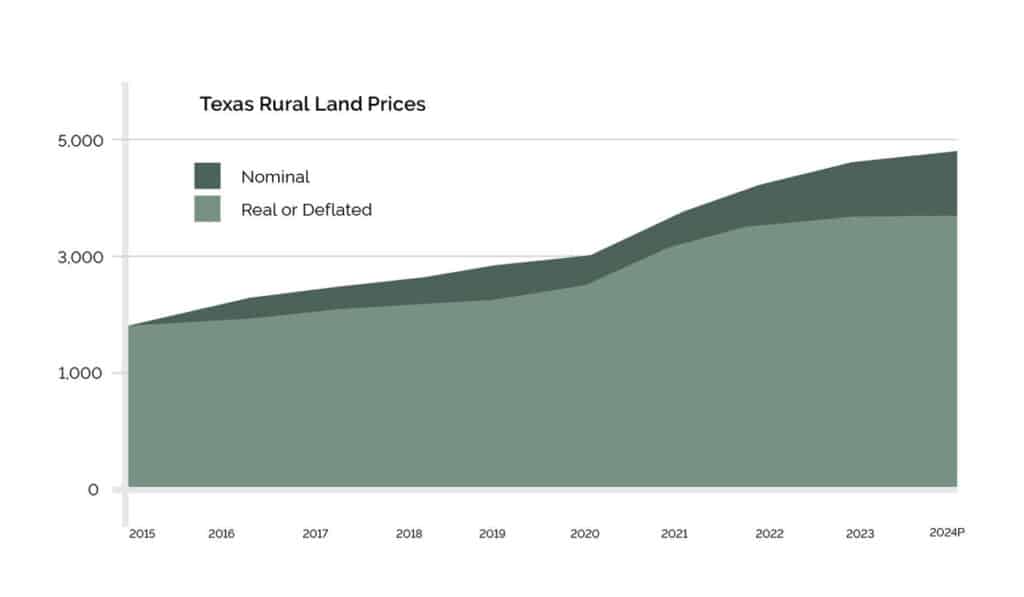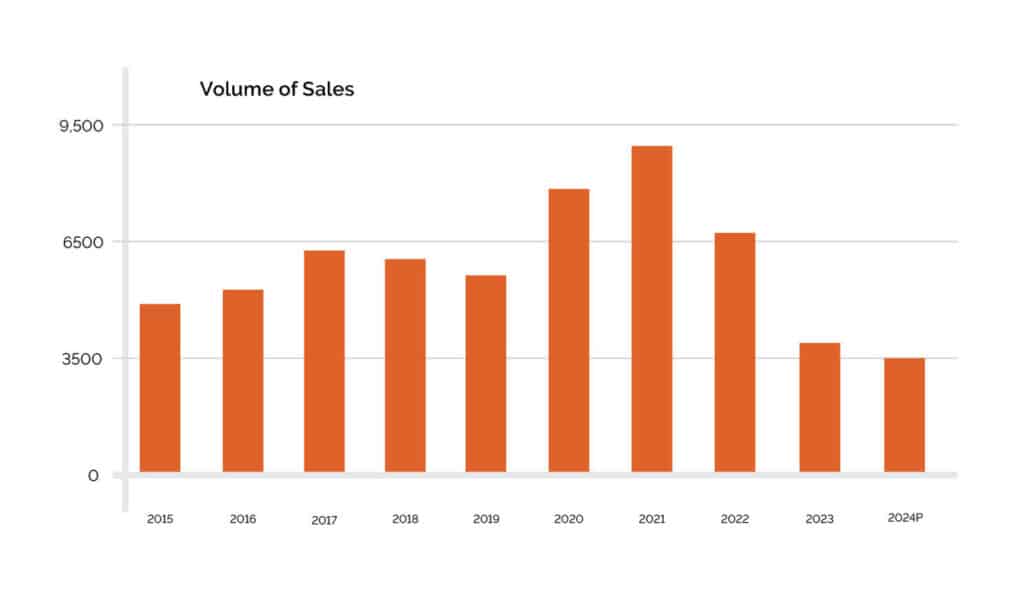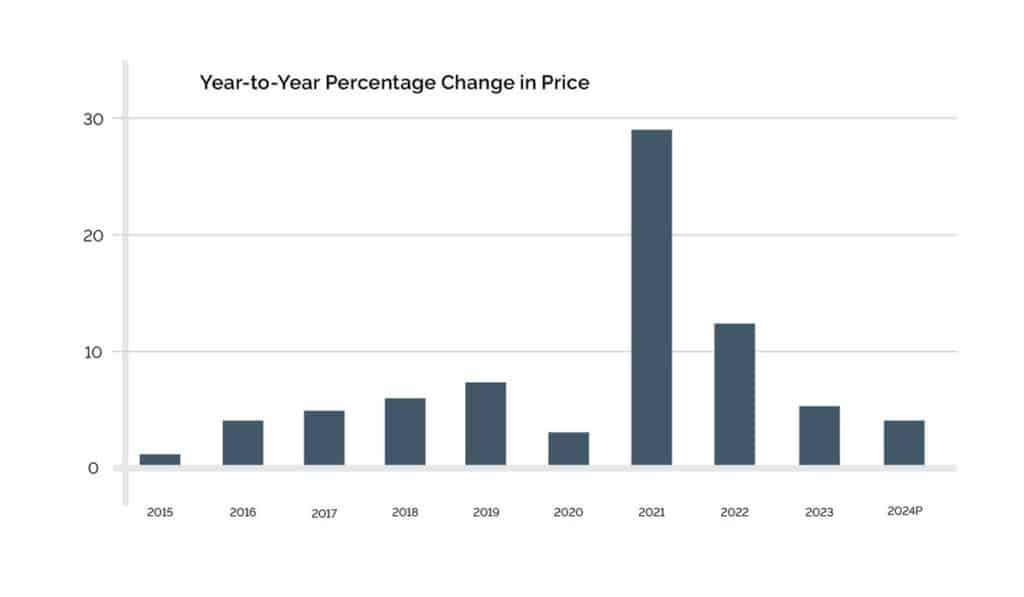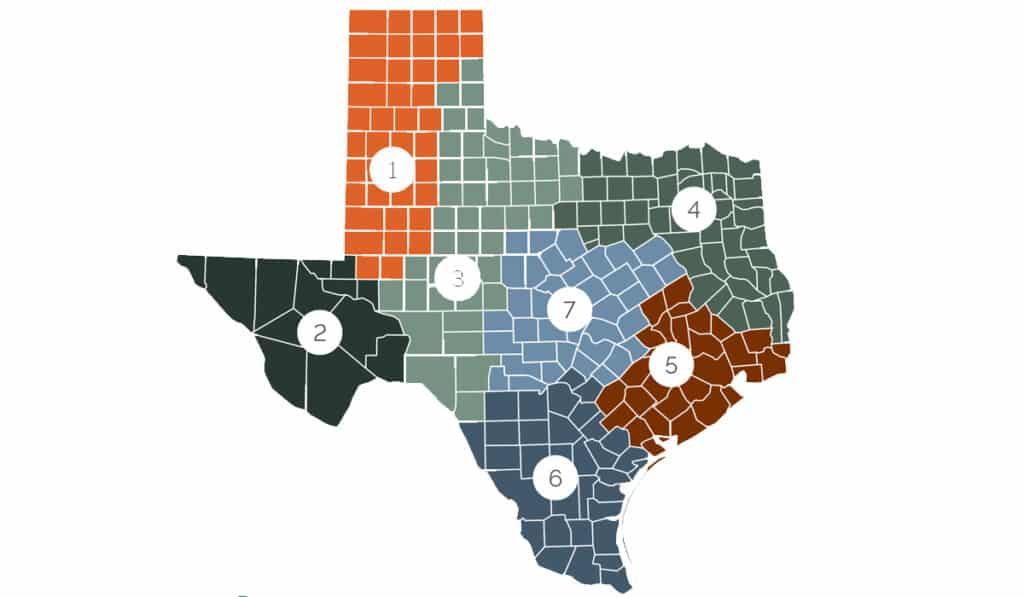
This article is featured in the Summer 2024 issue of Texas LAND magazine. Click here to find out more.
- The Preliminary Total Acres Dropped to 246,950
- Preliminary Total Number of Sales Dropped to 34.71%
- Overall Prices Increased 3.69%
- Preliminary Total Acreage Declined 42.97%



High interest rates and slackening demand continued to depress the level of activity in Texas land markets in the first quarter of 2024. The number of sales lagged 34.71 percent from first quarter 2023 levels. First quarter prices did post a modest 3.69 percent increase statewide, however several regional markets experienced slight drops in overall prices as the number of acres changing hands declined to 246,950 acres, a 42.97 percent retrenchment from 2023 first quarter results. Given these market realities, prices may actually have declined from levels established in the 2021-2022 market frenzy. As markets weaken, volume of sales drop, as would-be sellers expect rising prices based on recent history and potential buyers encounter the new realities resulting from rising interest rates and changing expectations about future gains. The market enters a discovery phase as participants adapt to the new realities. In those times, good quality properties tend to continue to sell while lesser tracts find no buyers. In those circumstances, prices for the good properties may retreat from previous highs and still register averages that exceed previous market indicators based on a mix of transactions containing a broader range of land resources. Prices still appear to be rising despite weakening conditions.

- Panhandle & South Plains. Responding to forecasts of challenging financial conditions for agricultural producers and rising interest rates, prices in this region retreated 0.30 percent from 2023 levels to $1,636 per acre. At 49,360, the number of acres sold dropped 35.14 percent from 2023 market totals. Total sales, at 340, fell 24.78 percent short of 2023 annualized volumes. Total dollar volume dropped 34.14 percent to $80.8 million.
- Far West Texas. Continuing challenging conditions in the energy industry returned prices to more modest levels at $641 per acre. That marked a 54 percent rise over 2023 prices. The number of sales held steady but total acres fell 34.79 percent. There were few sales reported for this region.
- West Texas. Exuberance waned in West Texas as activity fell 34.33 percent to 463 sales with acres transferred falling 48.43 percent to 60,565. Prices retreated here to $2,340 per acre, a 2.94 percent decline from 2023 first quarter results. Total dollar volume plummeted 49.95 percent to $142.7 million.
- Northeast Texas. Prices in this region shot up 10.24 percent to $8,427 per acre. However, at 1,047 sales, a 36.35 percent decline, total acres transferred retreated 40.57 percent to 32,001. In addition, total dollar volume declined 34.48 percent to $260.7 million.
- Gulf Coast–Brazos Bottom. Prices in this region fell significantly by 4.81 percent to $8,427 per acre. Volume dropped 33.84 percent to 477 sales while total dollar volume sank 43.98 percent to $161.8 million. Total acreage slid 41.15 percent to 17,517 acres.
- South Texas. South of San Antonio prices strengthened, up 10.84 percent to $6,341 per acre. Sales volume nosedived 47.79 percent to 284 sales driving total dollar volume down 55.25 percent to $126.3 million. Total acreage plunged 59.63 percent to 19,911 acres.
- Austin-Waco-Hill Country. Prices barely changed here, dropping 0.24 percent to $7,103 per acre as buyers continued to shun formerly active urban areas owing to changed investment expectations following interest rate hikes. The number of sales totaled 947 sales. Total dollar volume declined 37.55 percent to $315.9 million. Total acres fell 37.40 percent with 44,471 acres.
The Future
Markets appear to be searching for a new equilibrium after the Fed has signaled high interest rates for the foreseeable future. Potential sellers recall the golden sellers’ markets of 2021–2022 and expect higher prices for their offerings. Meanwhile, many would-be buyers have surveyed uncertainty roiling the markets and societal upheavals disrupting many institutions and adopted a wait-and-see approach as the basis for their plans. These conditions point to a market with likelihood of some weakening in prices in the months ahead.
